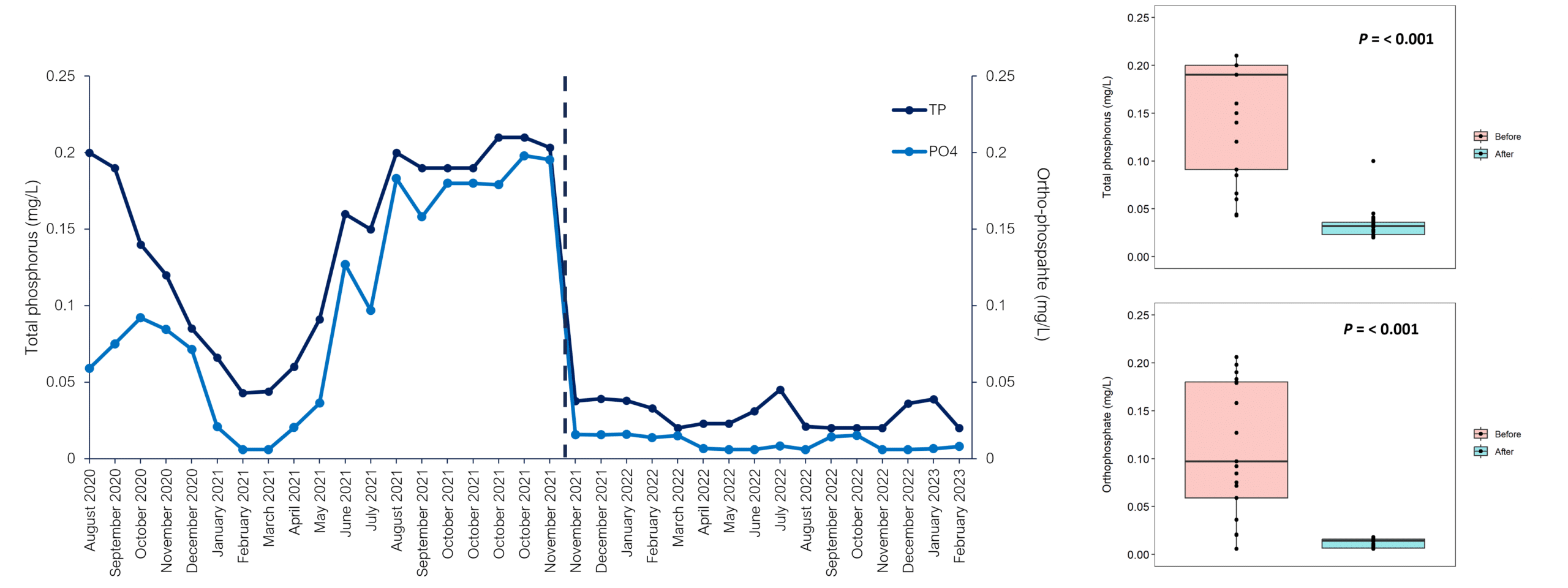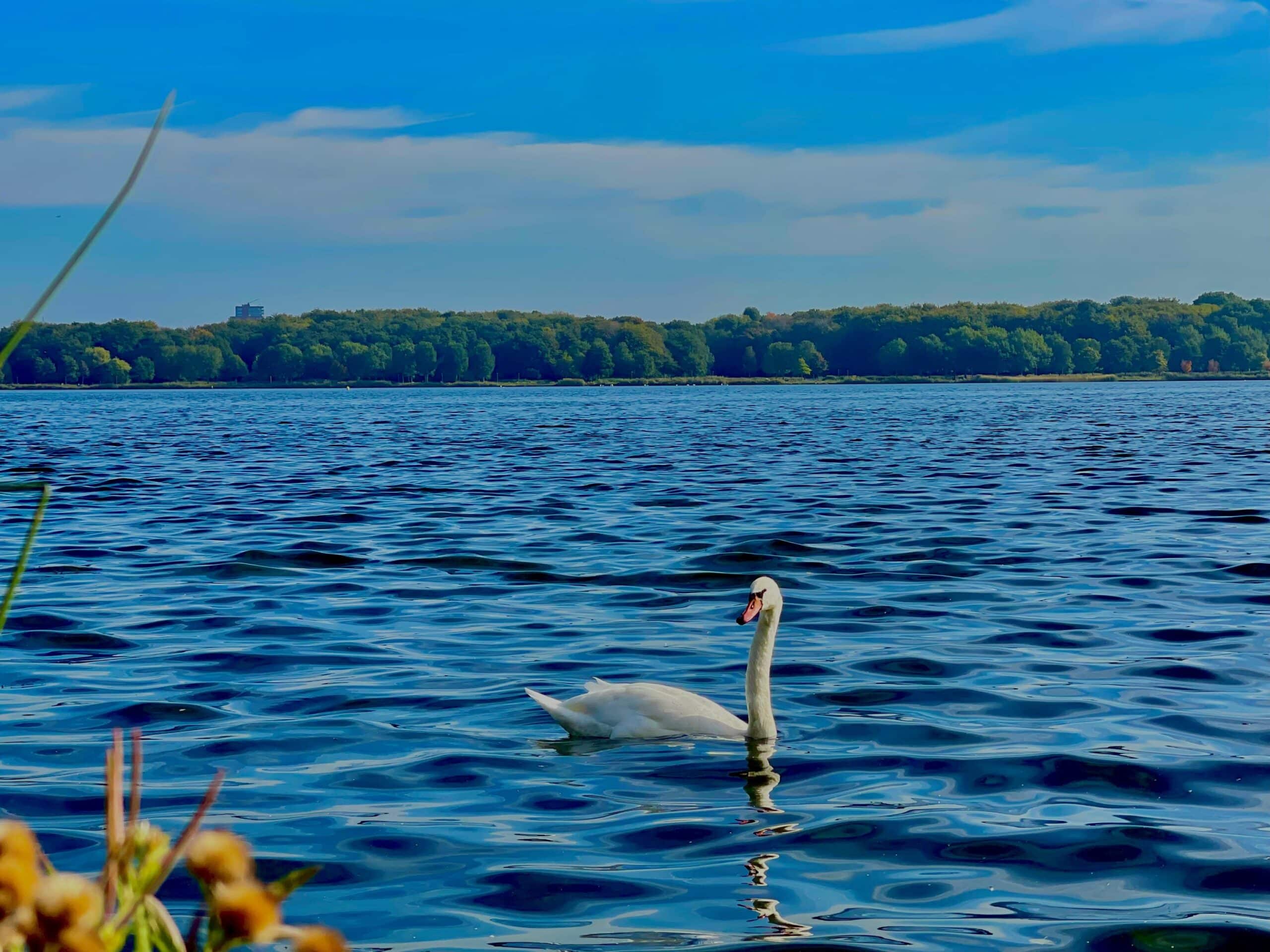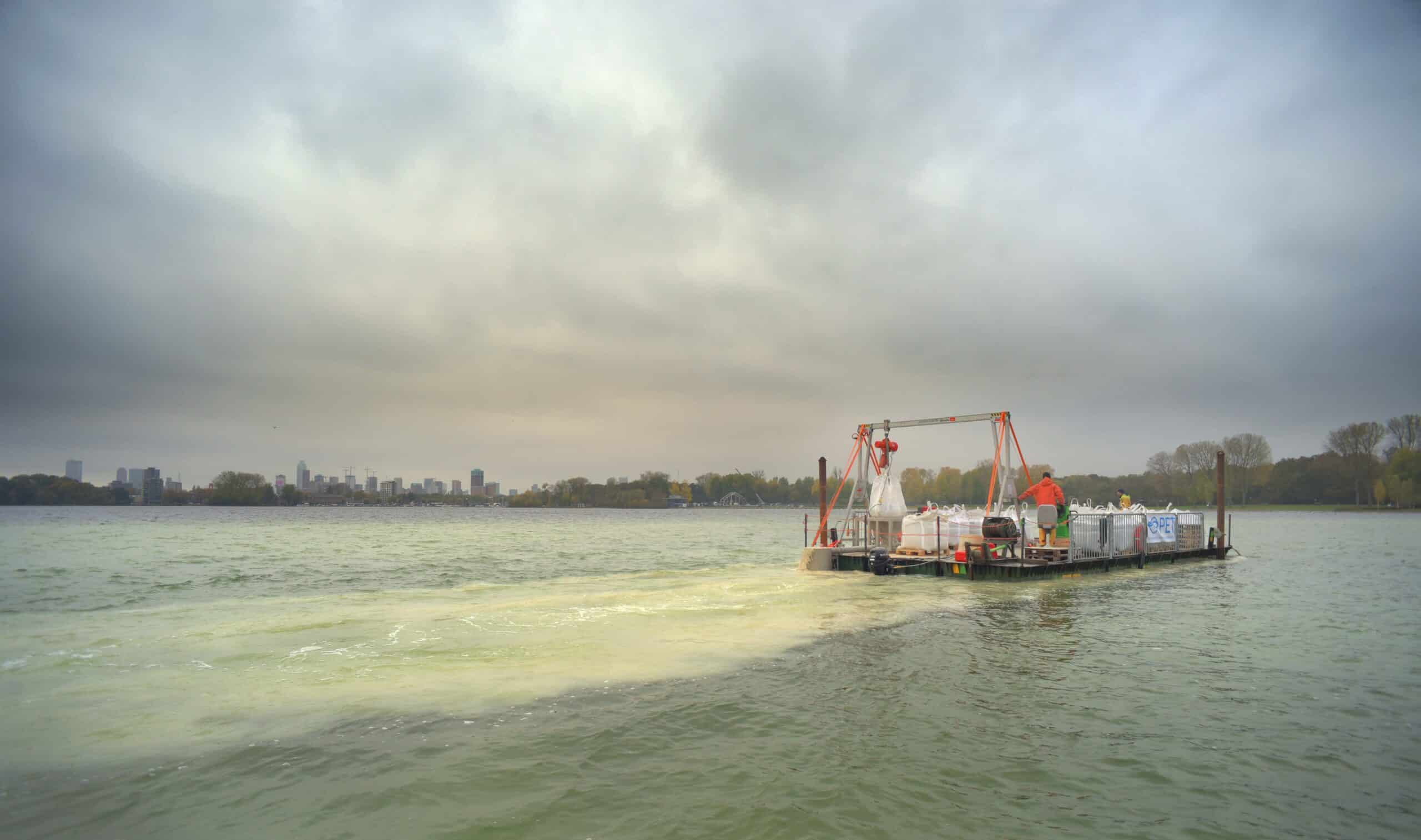About
The Kralingse Plas was created in the early 1800s from peat mining. The lake is situated to the northeast of the city of Rotterdam in the suburb Kralingen. It is visited by more than three million people annually. The site is primarily used recreationally for activities such as fishing, swimming, sailing, and other water sports. Monitoring of the water quality over the past two decades has suggested that the poor water quality can be attributed to external influences from the surrounding catchment and internally from sediment phosphorous release. Work has been done by the City of Rotterdam for several years to improve the water quality of the lake and for it to comply with Water Framework Directive (WFD) targets for its lake type.
The Treatment
A Phoslock application was carried out over 24 days in November 2021 using two large pontoon systems. Phoslock granules were mixed with lake water in a custom mixing chamber and sprayed over the lake surface as a slurry. Global Positioning System (GPS) technology was used on the boat to assure uniform application. Phoslock dosing was based on the phosphorus concentrations of the water column and the amount of potentially releasable phosphorus from the sediments.
Monitoring
The Waterboard monitor a number of different water quality parameters in the Kralingse Plas on a monthly basis to assess changes in its water quality. Both pre- and post- water quality data was available to assess the effectiveness of the Phoslock application.
Prior to treatment the lake was split up into 42 zones and 10 sediment cores were taken in each zone. From each of the cores, the top 10 cm layer of sediments was homogenized and sent to the lab for analysis. Sequential phosphorus extraction was used to determine relevant phosphorus fractions and compare concentrations of potentially releasable and stable phosphorus forms prior to and following the treatment. Sediment samples were also taken during the application at 5 different locations in the lake and this continues through the post application period.

Results & Conclusion
No significant changes were measured in pH, turbidity, conductivity and alkalinity as a result of treatment. Phoslock rapidly (< 2 weeks) and significantly (p < 0.001) decreased the total (> 80%) and free reactive phosphorus (> 95%) in the water column 16 months post-treatment. Phoslock also bound the phosphorus in the sediment to more stable fractions that aren’t considered as easily releasable under natural lake conditions.
Phoslock significantly decreased and sustained lower concentrations of phosphorus in the water column more than one year post-treatment. The application also shifted sediment phosphorus fractions to highly stable forms compared to pre-treatment concentrations. Phoslock provided the City of Rotterdam with an ecologically sound solution to address phosphorus pollution and restore water quality and to meet WFD targets.


